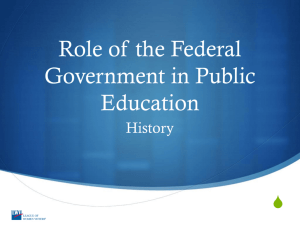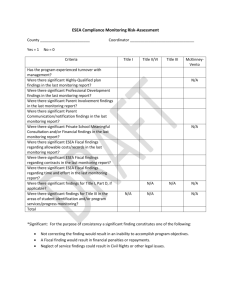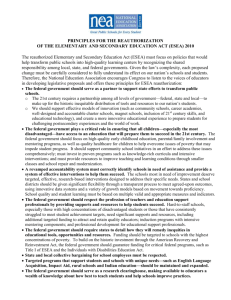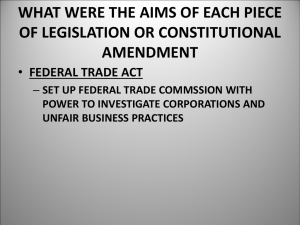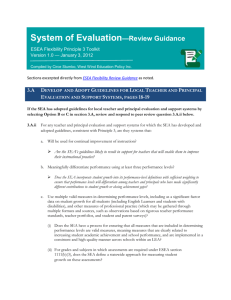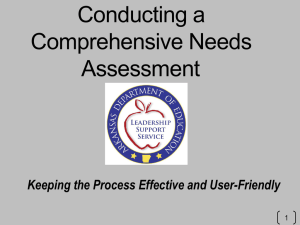PublicEducation_history
advertisement
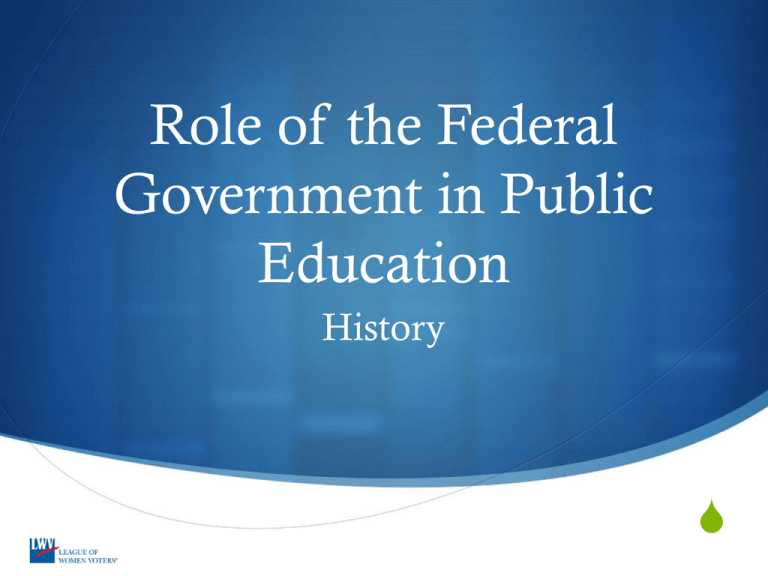
Role of the Federal Government in Public Education History S The New Republic Northwest Ordinance of 1785 – Education supported financially and thought to be a national concern. Constitution, Article 1, Section 8 Congress was granted the power to lay and collect taxes to provide for the general welfare. Constitutional Amendment 10th Amendment – 1791- The powers not delegated to the United States by the Constitution, nor prohibited it to the States are reserved to the States respectively, or to the people. Because public education was not specifically granted to the federal government, it became a local and state responsibility to fund. Constitutional Amendment 14th Amendment – 1868 – All persons born or naturalized in the U.S. are citizens and therefore have the rights and privileges of life, liberty or property, and are within the jurisdiction of equal protection under the law. Land Grants 1862 and 1890 – First and Second Morrill Act granting public land to colleges across the country. Later called the Land Grant act. Donation of public lands to states to be used for the endowment, support and maintenance of at least one college where the leading objective would be to teach agriculture and mechanic arts. Court Cases for Education 1896 – Plessy v Ferguson – Ruled that “separate but equal” policies would be legal for public schools. 1954- Brown v Board of Education of Topeka- Ruled that “separate but equal” is not legal. Vocational Education 1917 – Smith-Hughes Act 1946 – George-Barden Act These two acts focused upon support of agriculture, industrial and home economics training for high school students. World War II Lanham Act of 1941 and Impact Aid Act of 1950 provided additional funding to communities/schools affected by the presence of military and federal employees. GI Bill, 1944 provided funds for returning veterans to attend college. National Defense Education Act 1958- The Russians launched Sputnik and the space/science race was on. NDEA provided teachers with graduate fellowships to improve the teaching of science, mathematics, and foreign language instruction at both elementary and secondary levels. Elementary and Secondary Education Act (ESEA) 1965 – A Comprehensive set of programs including Title 1 program for federal aid to the disadvantaged that is periodically updated. ESEA explicitly prohibits a national curriculum and President Obama’s “Blueprint” does not mention a national curriculum. ESEA provided professional development, instructional materials, and resources to support parental involvement. Called No Child Left Behind (2001) Where are we now? Discussions of reauthorization of ESEA • Issues include: Role and Purpose of the federal government in public education and funding. • Currently federal funding averages about 10% of local education budget revenue. • Discussions of national standards and possible assessments.
